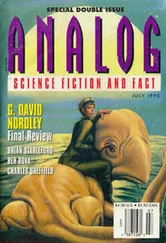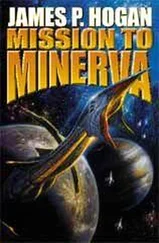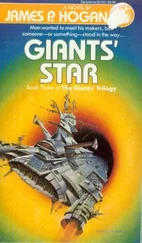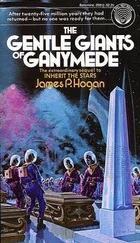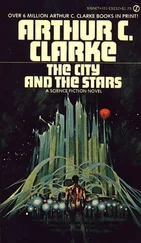James Hogan - Inherit the Stars
Здесь есть возможность читать онлайн «James Hogan - Inherit the Stars» весь текст электронной книги совершенно бесплатно (целиком полную версию без сокращений). В некоторых случаях можно слушать аудио, скачать через торрент в формате fb2 и присутствует краткое содержание. Жанр: Фантастика и фэнтези, на английском языке. Описание произведения, (предисловие) а так же отзывы посетителей доступны на портале библиотеки ЛибКат.
- Название:Inherit the Stars
- Автор:
- Жанр:
- Год:неизвестен
- ISBN:нет данных
- Рейтинг книги:3 / 5. Голосов: 1
-
Избранное:Добавить в избранное
- Отзывы:
-
Ваша оценка:
- 60
- 1
- 2
- 3
- 4
- 5
Inherit the Stars: краткое содержание, описание и аннотация
Предлагаем к чтению аннотацию, описание, краткое содержание или предисловие (зависит от того, что написал сам автор книги «Inherit the Stars»). Если вы не нашли необходимую информацию о книге — напишите в комментариях, мы постараемся отыскать её.
Inherit the Stars — читать онлайн бесплатно полную книгу (весь текст) целиком
Ниже представлен текст книги, разбитый по страницам. Система сохранения места последней прочитанной страницы, позволяет с удобством читать онлайн бесплатно книгу «Inherit the Stars», без необходимости каждый раз заново искать на чём Вы остановились. Поставьте закладку, и сможете в любой момент перейти на страницу, на которой закончили чтение.
Интервал:
Закладка:
"We can’t tell how long the orphaned moon plunged steadily nearer the Sun. Maybe the trip lasted months, maybe years. Next comes one of those million-to-one chances that sometimes happen in nature. The trajectory followed by the moon brought it close to Earth, which had been pursuing its own solitary path around the Sun ever since the beginning of time!" Hunt paused for a few seconds. "Yes, I repeat, solitary path! You see, if we are to accept what I believe to be the only satisfactory explanation open to us, we must accept also its consequence: that until this point in time, some fifty thousand years ago, planet Earth had no moon! The two bodies drew close enough for their gravitational fields to interact to the point of mutual capture; the new, common orbit turned out to be stable, and Earth adopted a foundling it has kept right up to this day.
"If we accept this account, many of the other things that have been causing problems suddenly make sense. Take, for example, the excess material that covers most of Lunar Farside and has been shown to be of recent origin, and coupled with that, the dating of all Farside craters and some Nearside ones to around the time we’re talking about. Now we have a ready explanation. When Minerva blew up, what is now Luna was sitting there right in the way of all the debris. That’s where the meteorite storm came from. That’s how practically all evidence of the Lunarian presence on Luna was wiped out. There’s probably no end to remains of their bases, installations, and vehicles still there waiting to be uncovered-a thousand feet below the Farside surface. We think that the Annihilator emplacement at Seltar was on Farside. That suggests that what is Farside to Earth today was Nearside to Minerva; hence it makes sense that most of the meteorite storm landed where it did.
"Charlie appears to have referred to compass directions different from ours on the Lunar surface, implying a different north-south axis. Now we see why. Some people have asked why, if Luna suffered such an intense bombardment, there should be no signs of any comparable increase in meteorite activity on Earth at the time. This too now makes sense: When Minerva blew up, Luna was in its immediate vicinity but Earth wasn’t. And a last point on Lunar physics-We’ve known for half a century that Luna is formed from a mix of rocky compounds different from those found on Earth, being low in volatiles and rich in refractories. Scientists have speculated for a long time that possibly the Moon was formed in another part of the Solar System. This indeed turns out to be true if what I’ve said is correct.
"Some explanations have suggested that the Lunarians set up advanced bridgeheads on Luna. This enabled their evident presence there to be reconciled with evolutionary origins on Minerva, but raised an equally problematical question: Why were they struggling to master interplanetary space-flight technology when they must have had it already? In the account I have described, this problem disappears. They had reached their own moon, but were still some ways from being able to move large populations to anyplace as remote as Earth. Also, there is now no need to introduce the unsupported notion of Lunarian colonies on either planet; either way, it would pose the same question.
"And finally, an unsolved riddle of oceanography makes sense in this light, too. Research into tidal motions has shown that catastrophic upheavals on a planetary scale occurred on Earth at about this time, resulting in an abrupt increase in the length of the day and an increase in the rate at which the day is further being lengthened by tidal friction. Well, the arrival of Minerva’s moon would certainly create enormous gravitational and tidal disturbances. Although the exact mechanics aren’t too clear right now, it appears that the kinetic energy acquired by Minerva’s moon as it fell toward the Sun was absorbed in neutralizing part of the Earth’s rotational energy, causing a longer day. Also, increased tidal friction since then is to be expected. Before the Moon appeared, Earth experienced only Solar tides, whereas from that time up until today, there have been both Solar and Lunar tides."
Hunt showed his empty hand in a gesture of finality and pushed himself back in his chair. He straightened the pile of notes on the desk before going on to conclude:
"That’s it. As I said earlier, at this stage it represents no more than a hypothesis that accounts for all the facts. But there are some things we can do toward testing the truth of it.
"For a start, we have a large chunk of Minerva piled up all over Farside. The recent material is so like the original Lunar material that it was years before anybody realized it had been added only recently. That supports the idea that the Moon and the meteorites originated in the same part of the Solar System. I’d like to suggest that we perform detailed comparisons between data from Farside material and data from the Asteroid surveys. If the results indicate that they are both the same kind of stuff and appear to have come from the same place, the whole idea would be well supported.
"Another thing that needs further work is a mathematical model of the process of mutual capture between Earth and Luna. We know quite a lot about the initial conditions that must have existed before and, of course, a lot more about the conditions that exist now. It would be reassuring to know that for the equations involved there exist solutions that allow one situation to transform into the other within the normal laws of physics. At least, it would be nice to prove that the whole idea isn’t impossible.
"Finally, of course, there is the Ganymean ship here. Without doubt a lot of new information is waiting to be discovered-far more than we’ve had to work on so far. I’m hoping that somewhere in the ship there will be astronomic data to tell us something about the Solar System at the time of the Ganymeans. If, for example, we could determine whether or not the third planet from the Sun of their Solar System had a satellite, or if we could learn enough about their moon to identify it as Luna-perhaps by recognizing Nearside surface features-then the whole theory would be well on the way to being proved.
"This concludes the report.
"Personal addendum for Gregg Caldwell…" The view of Hunt was replaced by a landscape showing a wilderness of ice and rock. "This place you’ve sent us to, Gregg-the mail service isn’t too regular, so I couldn’t send a postcard. It’s over a hundred Celsius degrees below zero; there’s no atmosphere worth talking about and what there is, is poisonous; the only way back is by Vega, and the nearest Vega is seven hundred miles away. I wish you were here to enjoy all the fun with us, Gregg-I really do!
"V. Hunt from Ganymede Pithead Base. End of transmission."
Chapter Twenty-Four
The long-awaited answers to where the Lunarians had come from and how they came to be where they had been found sent waves of excitement around the scientific world and prompted a new frenzy of activity in the news media. Hunt’s explanation seemed complete and consistent. There were few objections or disagreements; the account didn’t leave much to object to or disagree with.
Hunt had therefore met fully the demands of his brief. Although detailed interdisciplinary work would continue all over the world for a long time to come, UNSA’s formal involvement in the affair was more or less over. So Project Charlie was run down. That left Project Ganymeans, which was just starting up. Although he had not yet received any formal directive from Earth to say so, Hunt had the feeling that Caldwell wouldn’t waste the opportunity offered by Hunt’s presence on Ganymede just when the focus of attention was shifting from the Lunarians to the Ganymeans. In other words, it would be some time yet before he would find himself walking aboard an Earth-bound cruiser.
Читать дальшеИнтервал:
Закладка:
Похожие книги на «Inherit the Stars»
Представляем Вашему вниманию похожие книги на «Inherit the Stars» списком для выбора. Мы отобрали схожую по названию и смыслу литературу в надежде предоставить читателям больше вариантов отыскать новые, интересные, ещё непрочитанные произведения.
Обсуждение, отзывы о книге «Inherit the Stars» и просто собственные мнения читателей. Оставьте ваши комментарии, напишите, что Вы думаете о произведении, его смысле или главных героях. Укажите что конкретно понравилось, а что нет, и почему Вы так считаете.


![Лаура Бренз - Потомственная ведьма[Inherit the Witch]](/books/79609/laura-brenz-potomstvennaya-vedma-inherit-the-witch-thumb.webp)
